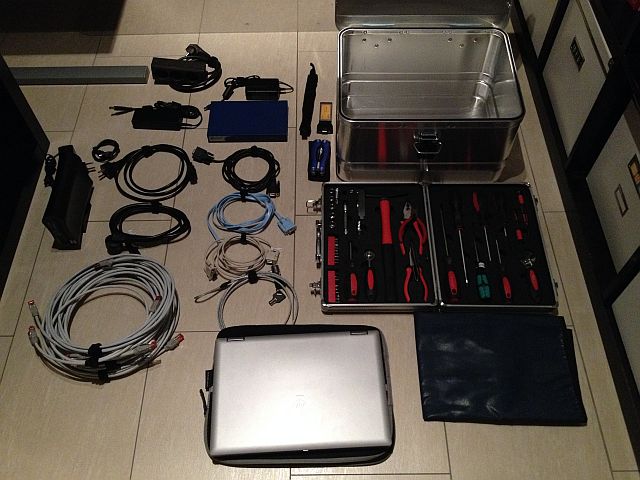Reducing the friction: On-site installation
Scott Lowes “Reducing the Friction” posts inspired me to write a bit about a part of my job.
A significant part of my work is the on-site installation of newly purchased equipment. That’s one thing my customers really like. I’m not only the pre-sales guy that is doing designs and workshops, but I am also the guy who installed the things which he has thought up. This prevents finger pointing if something isn’t working as expected. I usually come into play after the rack installation and cabling. At this point I’ve done a lot of work. After the order confirmation one of my first activities is a meeting with the customer to plan the installation. This meeting is the formal project kickoff and a result of this meeting is a project plan, milestones, goals etc. You should note that project management is a important part, but It’s not done by a dedicated project manager. A dedicated project manager is only involved in bigger projects, but not for the usual “4-hosts-1-storage-dual-fc-fabric-1-vsphere-cluster” projects. At this point I start to structure the project. I create work packages, define activites, goals and configuration details with the customer. I use mind maps for it. In the end I have a big mind map with all work packages, activites, milestones etc. The process of thinking through the project is the hardest part. You need a certain amount of project experience. You should define as much as you can with the customer. Hostnames, IPs, VLANs, volume names, pros & cons of certain configurations, define a default password with the customer etc. - the more you define with the customer, the less you have to discuss and ask during the installation phase. You shouldn’t discuss the design with the customer at this point. If you have to discuss the design during the kickoff, either the requirements have changed or you sold something that don’t satisfy customer requirement. Now the task is to implement the design. After the kickoff you should have all you need, to go through the installation. I try to use digital media during those kickoffs. Either I use my iPad for notes and sketches, or I write it directly into a mind map. I use UPAD with a Bamboo Stylus Duo on my iPad and Mindjet MindManager on Windows.
Before you begin with the installation you should ensure that you have all software, all licenses and all information you need. It’s annoying when you start during installation to download software. Sometimes you can’t avoid it. In this case you should ensure that you have a fast and working internet connection. Another cause of delay and friction is a laptop that isn’t working, a empty battery, a missing power outlet, missing tools and software (for example terminal emulation, missing serial cables, tools etc.). To me it’s uncomfortable to ask the customer for cables or tools. It looks disorganized.
During the installation you should make sure to keep the track. Follow the work packages and activites. Do it step by step. If you’ve more experience, you can try to do thing parallel, for example install ESXi onto the hosts and update the FC-Switch firmware. Document your work and what you’ve configured. If the customer is with you, explain what you are doing. This shows that you don’t do this for the first time.

Patrick Terlisten/ vcloudnine.de/ Creative Commons CC0
When I go to the customer, then I have a medium-sized box with me. Everything I need is in this box. You can see on the picture: HP 6450b laptop with Windows 7 (used only for installations), tools, different serial cables, different TP-cables in different length, serial port ExpressCard, a Juniper 5GT firewall, power supplies & socket strip, antistatic mat, USB disk (offline WSUS, Windows Server VMware templates, lots of software etc.) and velcro.
Of course I only have the box with me when I’m working with HW. For example updating vSphere enviroments, firewall, networking or pure consulting projects I do without my box. :) For my daily work I use a Rimowa Salsa business trolley, in which I store notebook, iPad, power supply etc.
Disorganized work is something I really can not stand. It looks unprofessional and it’s error-prone. The better you prepared, the better the result will be.
How do you organize your work in case of a on-site installation?
